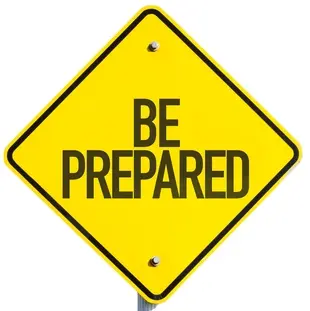A Disaster Can Happen to You. Here’s What You Need to Know to Protect Your Business

As many parts of the country are entering the spring storm season (or are still digging out from winter weather), now is a good time to review your company’s disaster plans and emergency protocols. It makes good business sense to be prepared for natural disasters, widespread illness or even acts of terrorism.
With some planning, you can protect your employees, information and equipment. Preplanning also helps you continue “business as usual” if you suddenly sustain damage to a facility or if employees can’t come to work but your customers are still depending on you. According to the Insurance Information Institute, a staggering 40 percent of businesses affected by disasters never re-open. This number is significant considering also that more than 25 percent of small businesses will experience a ”significant crisis” in a given year and nearly 66 percent of small businesses do not have an emergency plan in place.
Now is the time to create a disaster plan
Your emergency plan will define employee and company roles and responsibilities in the event of an emergency and should also define short and long-term company goals after a disaster. It should be written out and shared with employees in advance of a disaster.
The goals of your disaster and emergency preparedness plan
A good disaster plan often includes steps to:
- Protect the safety of employees, visitors and others from hazards at the facility • Maintain customer service by minimizing interruption of business operations • Protect facilities, physical assets and electronic information • Protect the organization’s brand, image and reputation • Prevent environmental contamination (if applicable)
What to include in your disaster preparedness plan
Preparedness plans should first protect life and limb and then focus on preserving business function and/or resuming business after a break. We recommend planning for several different situations and worst possible scenarios, along with practicing the plan as needed or as applicable.
- Key employees should assist in the development, implementation and maintenance of the preparedness program. Assign a point person to guide the program and communicate essential aspects of the plan to all employees. Periodically review the plan to ensure it meets the current needs of your business.
- Keep records accessible and backed-up and make note of any laws, regulations or other requirements that may have changed. Research and plan alternative options for facilities, equipment and supplies. Include options for accessing customer files, financial records and digital resources. If you are unable to save or salvage physical files or computers, backing up information is vital to getting back to normal. Storing data remotely or online can make the process easier.
- Identify the critical business activities and resources needed in order to maintain customer service and develop a communications strategy to reach your customers after a disaster.
- Compile a list of important phone numbers and addresses of clients, contractors, suppliers, financial institutions, insurance agents and claims representatives, as well as local and state emergency management agencies. The list should also include employees and company officials.
- Keep this information offsite or accessible digitally.
- Talk to a TriNet HR expert for guidelines on setting up your plan. Resources are also available online at sites such as https://www.ready.gov/, www.sba.gov and https://www.redcross.org
This communication is for informational purposes only; it is not legal, tax or accounting advice; and is not an offer to sell, buy or procure insurance.
This post may contain hyperlinks to websites operated by parties other than TriNet. Such hyperlinks are provided for reference only. TriNet does not control such web sites and is not responsible for their content. Inclusion of such hyperlinks on TriNet.com does not necessarily imply any endorsement of the material on such websites or association with their operators.






